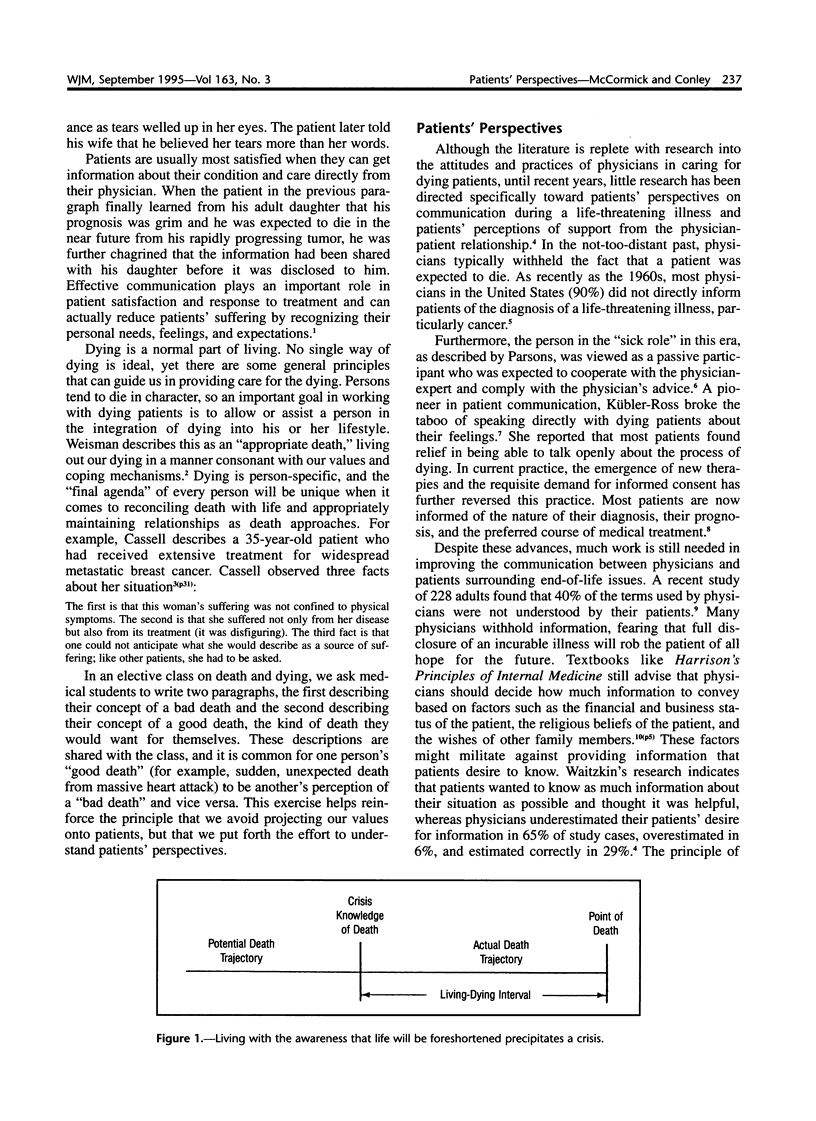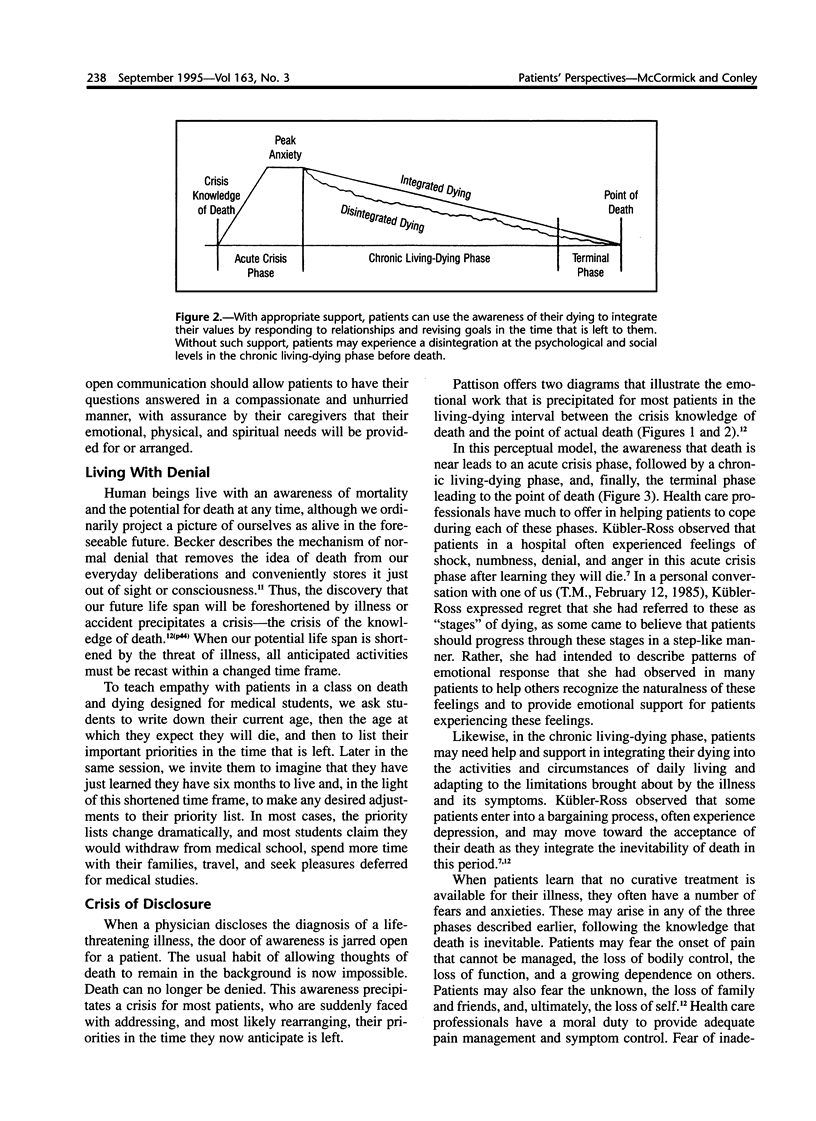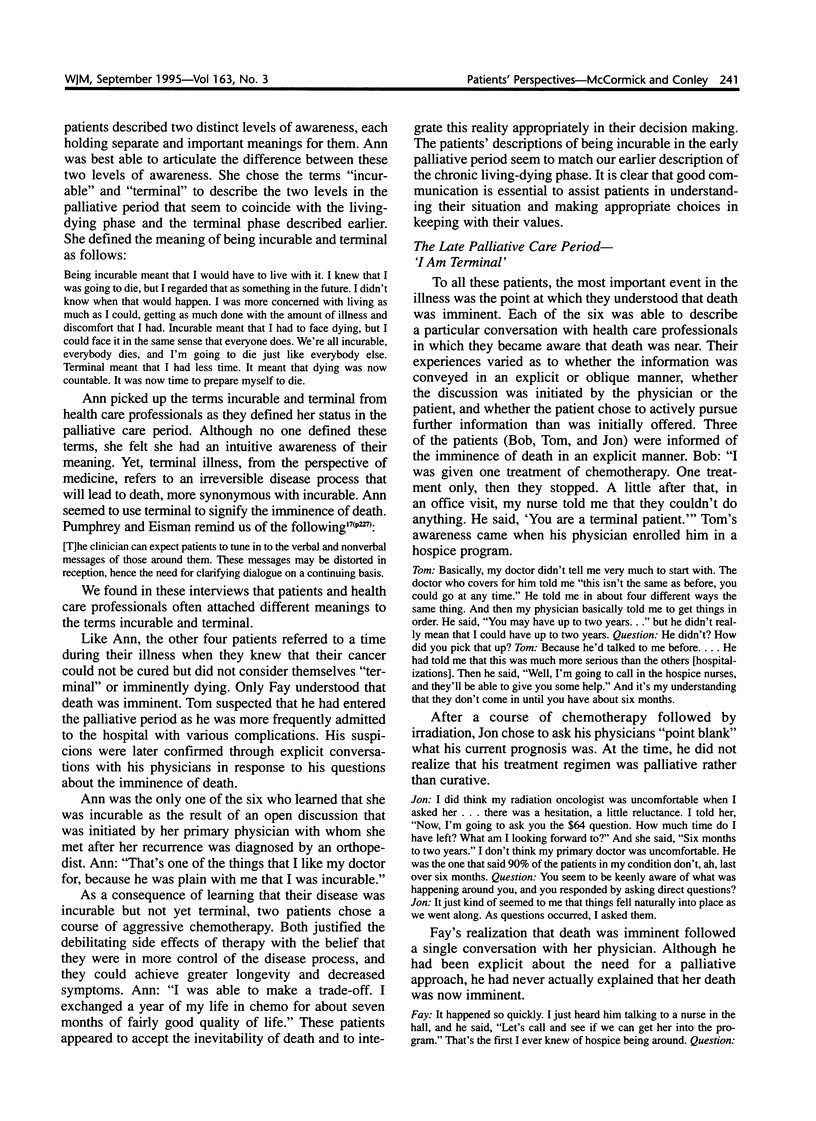Abstract
Dying patients have much to teach us about their preferences for care. Although caring for dying patients is a major responsibility of physicians, the current curriculum in medical education emphasizes the pathophysiology and treatment of disease, with scarce time and emphasis for developing attitudes and skills essential to caring for persons in the final stage of life. Barriers to satisfactory communication may arise from either the physician or the patient, or both. Patients and physicians sometimes attach different meanings to words that are commonly used in discussing treatment. Barriers can be diminished or resolved by applying good communication skills, including attending to both verbal and nonverbal signals, exploring incongruent affect, and empathically eliciting patients' perspectives about illness, treatment plans, and end-of-life issues. The competent care of dying patients must extent beyond the management of physical symptoms because patients may experience their gravest suffering from fears and anxieties that go unaddressed in conversations with their physician. Conflicts arise when the disease progresses and the end of life approaches if the physician and patient have not reached agreement on their expectations. Physicians may initiate life-prolonging mechanisms when patients actually prefer palliative care. Patients experience a reduction in both physical and psychological aspects of suffering when physicians use good communication skills, are sensitive to patients' perspectives, and actively work to reduce barriers to mutual understanding.
Full text
PDF







Selected References
These references are in PubMed. This may not be the complete list of references from this article.
- Feldman E. Medical ethics the Japanese way. Hastings Cent Rep. 1985 Oct;15(5):21–24. [PubMed] [Google Scholar]
- Novack D. H., Plumer R., Smith R. L., Ochitill H., Morrow G. R., Bennett J. M. Changes in physicians' attitudes toward telling the cancer patient. JAMA. 1979 Mar 2;241(9):897–900. [PubMed] [Google Scholar]
- OKEN D. What to tell cancer patients. A study of medical attitudes. JAMA. 1961 Apr 1;175:1120–1128. doi: 10.1001/jama.1961.03040130004002. [DOI] [PubMed] [Google Scholar]
- Oberst M. T. Methodology in behavioral and psychosocial cancer research. Patients' perceptions of care. Measurement of quality and satisfaction. Cancer. 1984 May 15;53(10 Suppl):2366–2375. [PubMed] [Google Scholar]
- Parsons T. The sick role and the role of the physician reconsidered. Milbank Mem Fund Q Health Soc. 1975 Summer;53(3):257–278. [PubMed] [Google Scholar]
- Waitzkin H. Doctor-patient communication. Clinical implications of social scientific research. JAMA. 1984 Nov 2;252(17):2441–2446. doi: 10.1001/jama.252.17.2441. [DOI] [PubMed] [Google Scholar]


